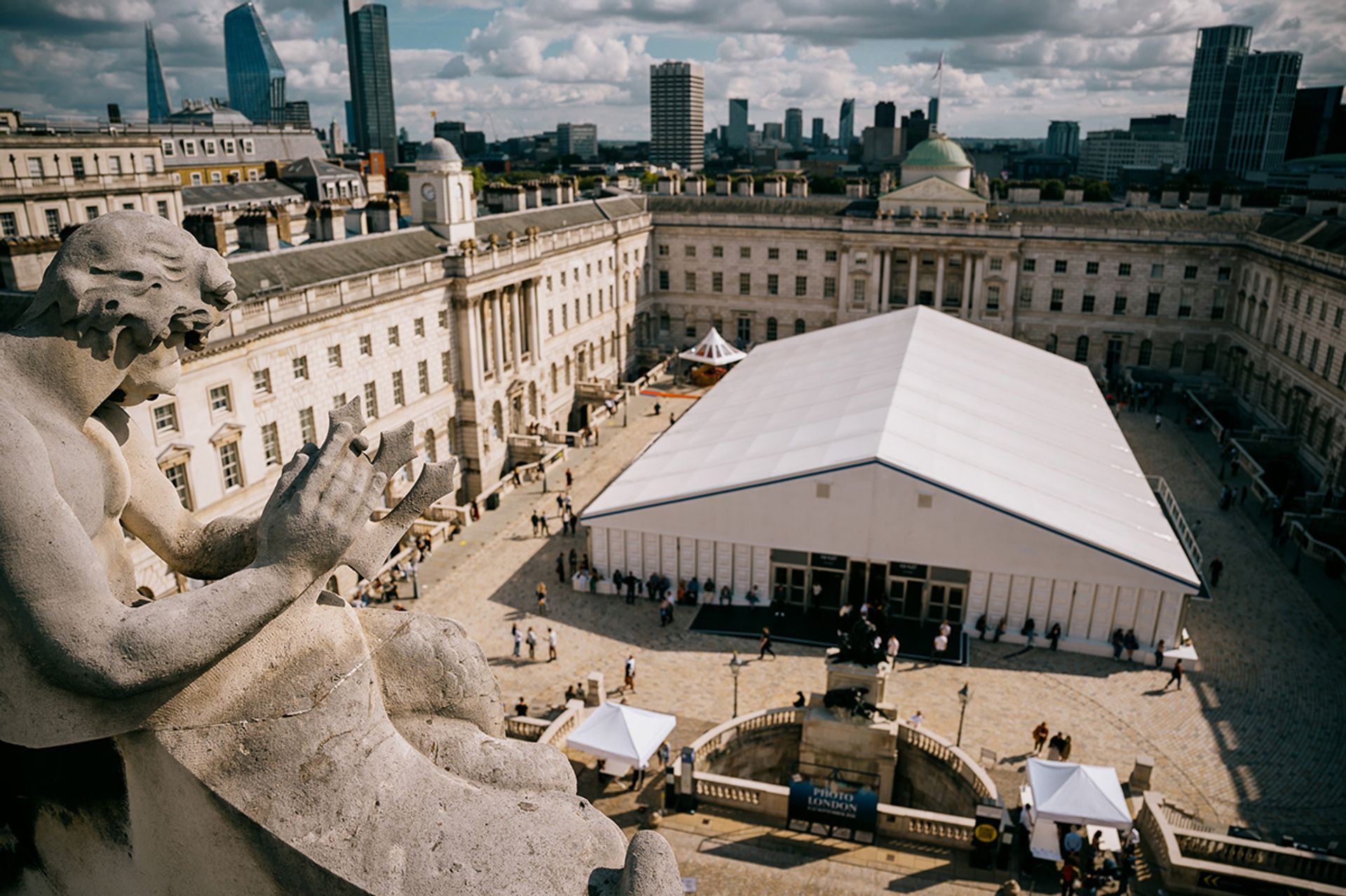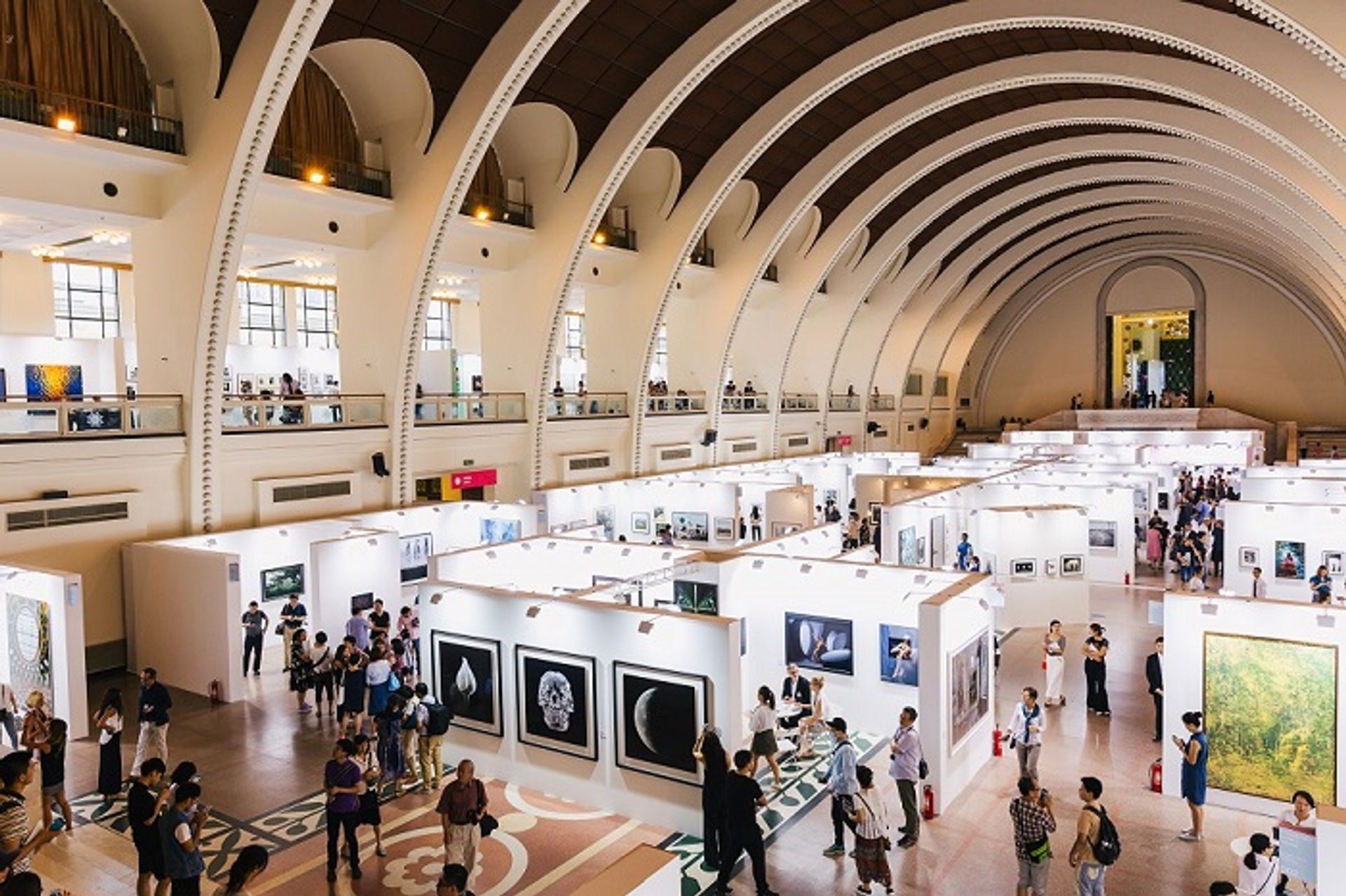Photo London is making a play for the Chinese photography market after selling a 25% stake to the World Photography Organisation.
The Photo London fair returns to Somerset House from 12-15 May for its seventh edition, with the British fashion photographer Nick Knight annointed as the most recent Master of Photography.
"We have endured two pretty grim years,” the fair's co-founder Michael Benson tells The Art Newspaper, “as we weathered the storms of Brexit and the pandemic.”
Now, as the pandemic eases, the fair will try to break into a brave new world after announcing a new partnership with the World Photography Organisation (WPO), a London-based company founded in 2007.
WPO is best known in the UK for establishing the Sony World Photography Awards. But the organisation has also made deeper incursions into the Chinese photography market than any other British photography group.
In 2014 WPO launched Photofairs Shanghai in the Chinese megacity, a fair now established as the leading photography-specific annual art fair in Asia. The next edition is due to take place at the Shanghai Exhibition Center from 22-25 September.
Now WPO founder Scott Gray has acquired a 25% stake in Photo London, allowing the fair’s founders, Michael Benson and Fariba Farshad, to remain as majority shareholders.
“It’s been a very natural evolution,” Gray says. “And it will allow us to further the reach of both fairs through our network in Asia.”
“It’s all quite new, but we’re already exploring all sorts of possibilities,” Benson says. “We’ve already begun to reach out to collectors in the region through Scott’s organisation in time for the fair in May, but I think we’ll really see some big changes in 2023.”

Photo London takes place at Somerset House, London, each May © Graham Carlow, courtesy of Photo London
WPO’s investment in Photo London will mean aspects of the curatorial programme at both fairs will now be able to cross over, creating a cultural dialogue between Shanghai and London through the curation and sale of photography.
“We have a very broad reach in Shanghai and across Asia,” Gray says. “This partnership will allow us to cross-programme between the two fairs, and that will provide a whole range of new opportunities for artists and galleries in both locations. If the artists succeed, then the fairs succeed too.”
While Photofairs has been always open about the need to comply with strict Chinese censorship in order to stage the fair, it has gained a reputation for having the bravery to platform and champion—from a curatorial and commercial perspective — Chinese artists who use photography to subtly imbue subversive messages about contemporary Chinese life.
In 2018, for example, the fair staged in full an exhibition of Chinese photography by dissident artists that had been due to open on 4 September 1999.
The exhibition, titled Wùshìrénfēi (the same but also changed), was scheduled to open at 859 Tian Yao Qiao Road in Shanghai. But on the day of the opening it was aggressively shut down by the authorities. Wùshìrénfēi was just one of hundreds of such shows to be actively closed down the Chinese state at that time, leaving a new wave of artists furiously creating in secret, but with no means to show their work. The show, if it had allowed to be seen, would have been one of the city’s first exhibitions dedicated to conceptual photography.
Photofairs was able, through careful negotiation, to show Wùshìrénfēi in full and for the first time, establishing for a new audience a forgotten generation of Chinese photographic artists, many of whom were never able to exhibit their work in an official capacitiy for much of their working life. The work sold out.
Back in London, Photofairs subtly billed Wùshìrénfēi as a reprisal of a great unseen exhibition, showcasing a generation of artists — including Geng Jianyi, Yang Fudong, Liu Wei, Hu Jieming, Xu Zhen, Liang Yue, Chen Xiaoyun, Yang Zhenzhong and Xiang Liqing — now recognised as pivotal to the development of contemporary Chinese art. In Shanghai, the exhibition was not framed as such. Yet, nevertheless, it recognised a movement of artists who created work behind closed doors, and without hope of being seen.

Photofairs Shanghai 2021 at the Shanghai Exhibition Centre © James Ambrose, courtesy of World Photography Organisation
Photofairs were also early supporters of contemporary Chinese artists such as Chen Wei, a master of multivalent works which evade censorship by dint of ambiguity. Chen creates still-life compositions to create metaphors of urban alienation, repression and cultural incarceration. It does not take a degree in the history of arts to understand what he is getting at, yet Photofairs was still able to get his work shown and sold.
The Chinese fair also platformed, early in her career, the work of Xyza Cruz Bacani, a poverty-stricken Filipina immigrant who spent more than a decade working as a housemaid in Hong Kong, and would borrow a camera during her only time off each Sunday, before then beautifully photographing the realities of the streets of the city, as well as the lives of fellow immigrant housemaids.
“This partnership will allow us to find ways to further support such artists from Asia in the European market, but will also help artists from Europe and America in the Asian market,” Gray says. “We are providing opportunities both ways.”
But Photo London will now be faced with a potential quagmire of programming issues. Since its inception in 2015, the fair has successfully managed to combine the sale of classic prints alongside the work of young and emerging artists, most notably in its Discovery section. Last year, for example, a collection of vintage prints by the leading documentarian Robert Capa were on show close to images from current students at the Royal College of Art, some of whom were Chinese immigrants studying photography in London. Some of the images on show by Chinese students were consciously sexualised and politically pointed—ones that would never stand a chance of making it past the censors in China. Showing this sort of work in a commercial setting has been key to the fair’s identity throughout.
The issues deepen when Hong Kong is included in the mix. Photo London’s fringe event, Peckham 24, last year exhibited a group exhibition staged concurrently to the main fair at Somerset House. The exhibition, Light, and curated by the former Sunday Times photo editor Monica Allende, presented the work of a group of dissident artists from Hong Kong. The works by Caleb Fung, Liao Jiaming, O’Young Moli, Julian, Tang Kwong San, Yuen Nga Chi and Wong Wei-him were all created in the midst of the anti-extradition law movement. Kowloon Park, a place secretly known as a cruising spot for gay men, was a recurring motif in the group show. ‘Stereotopia’, the concept of how marginalised groups can escape from power structures and evade authoritarianism, was also actively brought to the fore.
Although the exhibition was not part of Photo London's offical programme, the presence of Light as a satellite of the fair might, it can only be assumed, cause Photo London complications further down the line.
“We have already learned a lot about what would work and what wouldn't work,” Benson says, when asked how he anticipates dealing with the Chinese authorities.
“I think, in the UK, we have a slightly odd perception of what will get past the censors,” Benson says. “But we’re working with people who are very skilled and very diplomatic. We won’t be walking around in hobnail boots. We're working with someone who knows the scene very, very well. But, still, it will be a real learning curve.”


